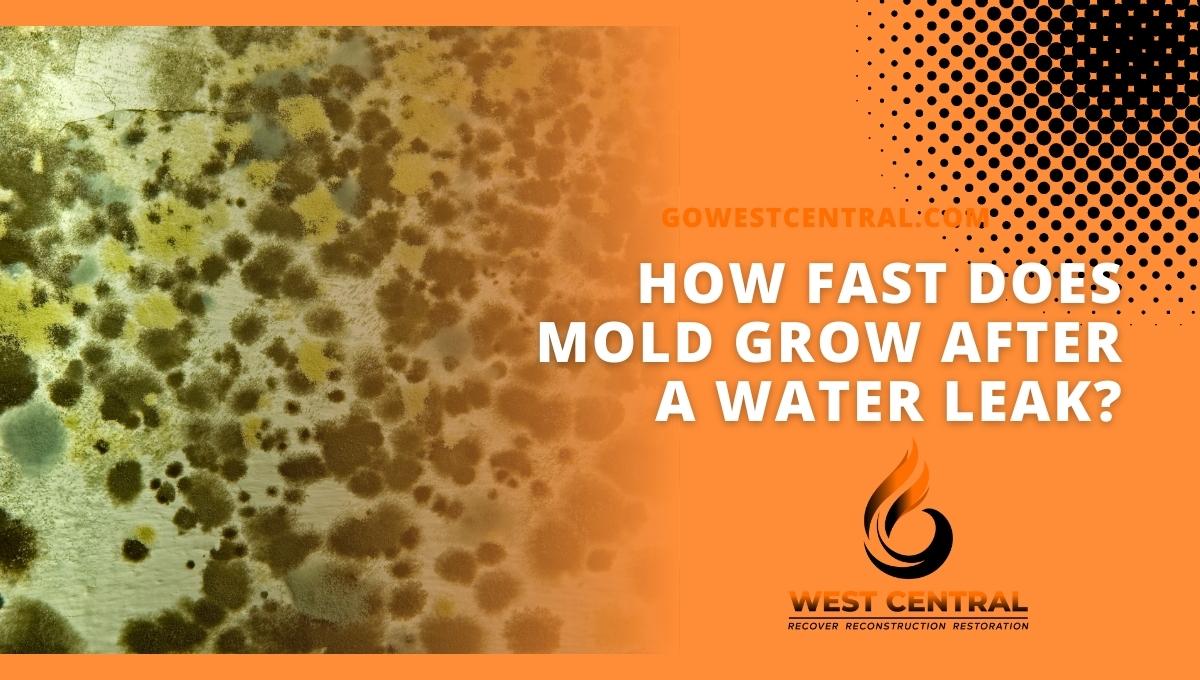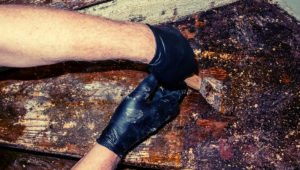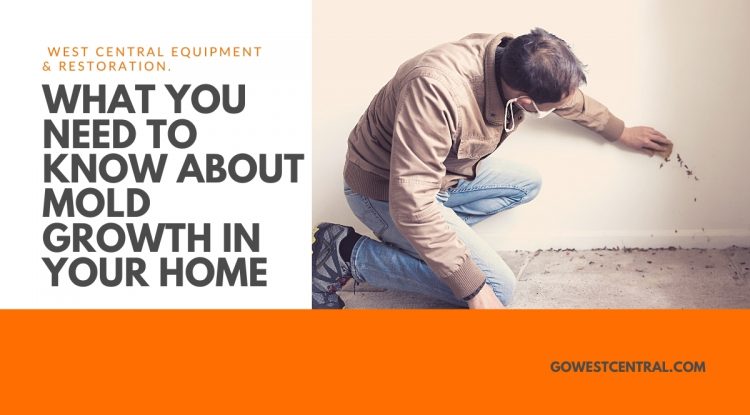 Mold is a fungus that grows from airborne microscopic spores found almost everywhere in the environment. Usually the spores are inactive, but when temperature exceeds 65 degrees or humidity surpasses 70-percent, they start to grow and flourish.
Mold is a fungus that grows from airborne microscopic spores found almost everywhere in the environment. Usually the spores are inactive, but when temperature exceeds 65 degrees or humidity surpasses 70-percent, they start to grow and flourish.
A typical mold spore is roughly 0.0002 inches in size (10 microns). And it can optimally grow anywhere in your home as long as there is adequate humidity, food, and warmth. In fact, mold grows throughout the year in any home; regardless of how clean it is, though an infestation usually takes 1-14 days to become apparent.
At first, a cluster of mold spores spreads on the surface. Then the spores in the cluster begin to reproduce. With gradual increase in the number of fungi, the mold growth becomes noticeable to the human eye.
In most cases, homeowners become aware of the presence of mold in their homes only after they see it or smell a damp, stuffy, moldy odor. But at times, the growth is only realized when there is an increased flare up asthma or allergies.
What are the key factors behind indoor mold growth?
For mold to grow in your home, spores must be present. There must also be a surface for them to grow, warmth, oxygen, and darkness. When moisture becomes available in a home with these ingredients—whether as stagnant water, a water leak or high level of humidity—mold problems begin.
Most often, the smaller mold spores appear like dirt or soot, which makes them quite easy to ignore. So it is always advisable not to ignore any suspicious dirty or sooty material on surfaces.
Make sure to call mold remediation technicians at the earliest sign of mold; as it is the often ignored pockets of mold that eventually establish huge colonies and end up spreading throughout a home.
How does mold spread in the house?
So long as there is mold in the crawl space or basement, the spores will rise throughout your home—what is called the “Stack Effect”. By stack effect it means that the rise and exit of warm air through the upper levels and the attic creates a vacuum on the lower level, which draws air upward from the basement and crawl space.
In turn, mold spores, odors, dust mites, and other airborne particles are drawn into the main area of the home. Then, once the spores access the main area of your home, they are nourished and flourish on any organic materials they can find, including wood, dust, wallpaper, fabric, and paint for nourishment.
The mold feed on these materials, and keep growing and spreading. But mold can also digest synthetic materials, such as pastes, adhesives, and paints. While mold cannot obtain nutrients from inorganic materials like glass and concrete, it will grow on the dirt present on the surfaces of these materials.
What should you do if you suspect mold in your home?
Start by determining the source of the moisture that is enabling the mold to grow. Fixing the moisture problem will stop further growth and spread of the mold. Also, make sure to dry out everything once you have dealt with the moisture problem.
Next, you should remove and clean up the mold. You can use fans and dehumidifiers to speed the process, but must never use fans for visible mold as this can cause mold spores to spread. Wear protective devices, such as a long-sleeved shirt, rubber gloves, eye goggles, long pants, and filter dust mask, before doing mold cleanup.
Once you are done with the cleaning, make sure to dispose any moldy materials. For the clothes and protective devices you wear during mold cleanup, put them in a plastic bag and discard or launder them before you leave the contaminated areas to avoid spreading mold spores through your home.
Bag and dispose porous moldy items, such as insulation, plaster, plasterboard, ceiling tiles, paper products, and some wooden items. But for non-porous and semi-porous materials, including metal, glass, hard plastic, and solid wood, make sure to clean them with a HEPA vacuum (high-quality HEPA filter) to remove the contamination.
If the mold growth is in the crawl space, basement, attic or any area that makes it difficult to get rid of, then call a professional mold remediation service. The experts have the skills and equipment to help detect and completely remove any form of mold growth.
At West Central Equipment and Restoration, we use techniques and solutions that yield great results. We have a track record of successful elimination of a wide range of mold infestations and will use our wealth of experience, advanced equipment, and efficient techniques to rid your home of whatever type of mold.
We guarantee improved indoor air quality after our painstaking mold remediation process. Call us today to find out how we can help you get your home to its best condition. For more information on mold remediation, visit the site “West Central Equipment and Restoration.”






 Flooding in your home is a distressing and devastating circumstance. It is never easy to see your home that you’ve worked hard on building get damaged, or worse, destroyed.
Flooding in your home is a distressing and devastating circumstance. It is never easy to see your home that you’ve worked hard on building get damaged, or worse, destroyed.
 When water, fire, mold, dust, smoke, storms and other hazards strike your property, you could suffer a significant setback in your quality of life or business revenue. The experience is upsetting. You want to repair and restore everything as soon as possible.
When water, fire, mold, dust, smoke, storms and other hazards strike your property, you could suffer a significant setback in your quality of life or business revenue. The experience is upsetting. You want to repair and restore everything as soon as possible.

